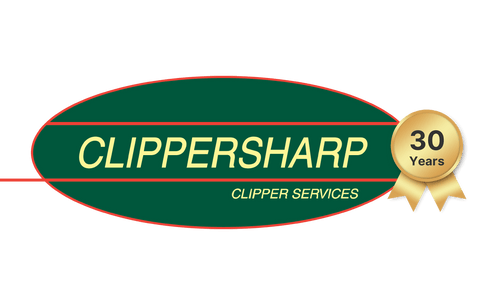It goes without saying that a healthy shine comes from within. Good feeding, exercise and a daily grooming routine are all key factors in contributing and encouraging good shine and condition to a coat all year round. However, there are certain times of the year, when additional care and attention within a grooming session prior to and after clipping can be particularly helpful in ensuring a fabulous finish, particularly when coats are on the change in the Autumn and Spring.
When clipping, if the coat is clean and as grease free as possible, the finish should be smooth and less likely to have lines showing. When the blades go through the hair, the exertion of moving through additional dirt and grease will give the undesirable teeth mark look, as well as dulling the blades more quickly and putting more strain on the motor.
Prior to Clipping
There are several ways to present a clean horse prior to clipping. A good hot soapy shower is quick and easy if there is access to this facility. Alternatively, our favoured one is the hot clothing system. This is a simple but effective way to give the horse a hot bucket bath and massage using a mixture of hot water and a dash of detergent or a specialised solution such as the Clippersharp Pre Clip Wash which contains Witch hazel, and works as an astringent and grease remover.
Groom in the usual way and brush the coat vigorously to remove all caked or loose mud, dirt and dander. Use a rubber curry comb or similar, to massage thoroughly to bring any further grease or dirt to the surface. Finish with a final brush off using a medium brush such as a Borstiq Shaped Mex Fibre brush. Then apply the hot wash solution with a cloth or sponge, massaging in well, and gradually working all over the body.
Dry thoroughly with a towel to remove any final dampness and dirt before starting to clip.
After Clipping
Once the coat has been clipped, there will be lots of hair and further dander that will be on the surface. Brush off with a soft, flicky brush, before applying a further hot cloth wash to pull out the remaining grease and dirt. This will leave the new clip soft and clean as well as giving the horse a refreshing final wash.
Rug up with appropriate rugs, depending on the weather and time of year. This will help with keeping the coat smooth and encourage the coat to come through during the early Spring.
It starts with prepping the coat before the last clip, this will prevent irritation to skin and make the process a lot smoother. Ensure the coat is clean and dry, and your blades are sharp ready to go. The less grease in the coat, the easier the blades will find it to clip through and the better finish you will get. With a greasy coat you will get very apparent teeth marks where the teeth have struggled to cut through the grease. With a clean coat you will just a get a very smooth finish with no obvious marks.
Once you have completed the clip, brush away any stray hairs with a soft body brush. Clipped skin can be more sensitive, so avoid using stiff brushes or hard curry combs
It is always best to give the coat a good wash down to remove any dirt or grease left by the blades, this will also soothe the skin (providing you use the correct products). Hot clothing is a great way of doing this.
We like to use Smart Grooming Super Shine lotion as it is a synthetic based lotion, this will moisturise the skin and hydrate the coat plus it won’t clog up your horse’s skin with excess oils. Simply mix a few drops of Super Shine with some warm-to-hot water and wipe over the coat working it deep into the skin.
Done regularly, hot clothing will help the new coat to grow through shinier and a lot quicker too!
It’s also important to ensure they are protected from the elements. A horse’s coat acts as their protection, and clipping means you are essentially exposing them to the wind, rain, and possible infections like rain scold.
You are going to need rugs to keep them warm when they are not being exercised or turned out in the field. If you will be changing your rugs regularly (for example taking off turnout rugs and putting stable rugs on) consider using a rugging system with internal liners. This allows you to change rugs without removing the internal liner from the horse, meaning that you are not taking off an entire warm rug to put on a cold one.
